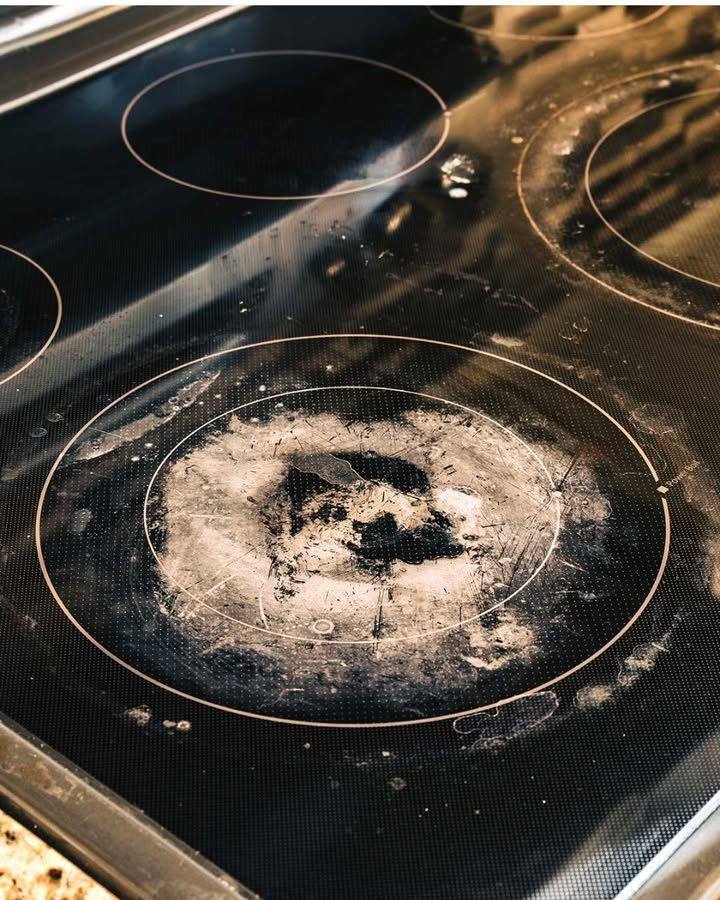ADVERTISEMENT
**How to Clean and Restore Your Glass Stove Top: A Comprehensive Guide**
Glass stove tops have become increasingly popular in modern kitchens for their sleek and stylish appearance. They provide a clean and contemporary look, often paired with advanced cooking technologies. However, while these stoves can certainly enhance the aesthetic of a kitchen, they also require special care and maintenance to keep them looking pristine. Over time, your glass stove top can become stained, scratched, and coated with grease, grime, and burnt food particles, making it look worse for wear. But don’t worry! There are solutions to restore its beauty and functionality.
In this comprehensive guide, we’ll walk you through the best practices for cleaning a glass stove top, how to prevent further damage, and what to do if your stove top looks damaged. Whether it’s stubborn grease, burnt food, or streaks that refuse to come off, we’ve got you covered.
—
### **Why Glass Stove Tops Need Special Care**
Before diving into cleaning methods, it’s important to understand why glass stove tops require more delicate care than traditional coil or gas stoves. Glass stoves are made from a special kind of tempered glass, which is designed to withstand high temperatures. However, the surface is more susceptible to scratches, streaks, and discoloration, especially when exposed to harsh cleaning chemicals or abrasive tools. Additionally, the smooth surface tends to show every fingerprint, food stain, and spill, which is why regular cleaning is essential.
But while they may seem delicate, glass stove tops can last for many years with the right care. Proper cleaning not only helps maintain their aesthetic appeal but also prevents the buildup of grease and grime that could affect the performance of your stove.
—
### **Basic Cleaning Techniques for Glass Stove Tops**
Let’s begin by addressing how to clean a glass stove top effectively without damaging it. You’ll need a few basic tools and ingredients, many of which you probably already have in your kitchen.
#### **Essential Tools and Ingredients for Cleaning a Glass Stove Top**
– **Dish Soap**: A mild, non-abrasive dish soap that can help break down grease without damaging the surface.
– **Baking Soda**: A gentle, natural abrasive that is excellent for removing stubborn stains without scratching the glass.
– **White Vinegar**: A non-toxic, natural cleaner that helps remove grease and mineral deposits.
– **Microfiber Cloths**: These are essential for wiping down the stove top and ensuring you don’t leave behind lint or streaks.
– **Glass Cleaner**: An ammonia-free cleaner designed for use on glass surfaces.
– **Plastic Scraper**: A non-abrasive tool that can help remove stuck-on food particles without scratching the glass.
– **Water**: For rinsing and diluting cleaning solutions.
– **Rubber Gloves**: Optional, but can help protect your hands from hot surfaces or cleaning products.
#### **Step-by-Step Cleaning Process**
1. **Allow the Stove to Cool**: Before you start cleaning your glass stove top, ensure that it has completely cooled down. Never attempt to clean a hot stove, as this could cause burns or damage the glass.
2. **Initial Wipe-Down with Dish Soap**: Using a damp microfiber cloth and a few drops of mild dish soap, wipe down the entire stove top. This will remove any surface grease, food particles, and dust. For light cleaning, this may be sufficient.
3. **Tackle Stubborn Stains with Baking Soda**: If you have stubborn grease stains or dried-on food, sprinkle a thin layer of baking soda over the stained areas. Baking soda is a gentle abrasive that can help lift tough stains without scratching the glass. Add a little water to create a paste and let it sit for 10-15 minutes.
4. **Scrub with a Microfiber Cloth**: After the baking soda has had time to work, use a damp microfiber cloth to gently scrub the affected areas. For any tough spots, use a plastic scraper to gently lift the debris without scratching the glass surface.
5. **Use Vinegar for Extra Shine**: Once the surface is clean, spray a small amount of white vinegar over the stove top. The vinegar helps break down any remaining grease and gives the glass a shiny, streak-free finish. Wipe it down with a clean microfiber cloth to buff it to a gleaming shine.
6. **Rinse and Dry**: Once you’ve removed all the dirt and debris, rinse the stove top with a clean cloth soaked in water to remove any residue from the baking soda or vinegar. Then, use a dry microfiber cloth to wipe down the surface and ensure there are no streaks.
For Complete Cooking STEPS Please Head On Over To Next Page Or Open button (>) and don’t forget to SHARE with your Facebook friends
ADVERTISEMENT
ADVERTISEMENT
